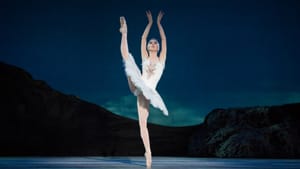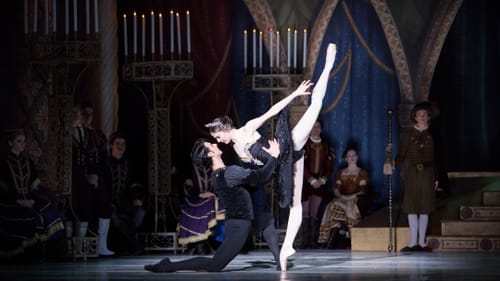Stay in the Loop
BSR publishes on a weekly schedule, with an email newsletter every Wednesday and Thursday morning. There’s no paywall, and subscribing is always free.
Swooning for the swans
Pennsylvania Ballet presents Tchaikovsky's 'Swan Lake'

I was wildly excited when I discovered that this season the Pennsylvania Ballet would perform Swan Lake with the classic Marius Petipa/Lev Ivanov choreography, interpreted by Angel Corella. I like Christopher Wheeldon’s reimagining well enough, but it is far from my favorite of his works.
Tchaikovsky’s unforgettable score made comparison between the two inevitable. It left me hungering for the real thing, huge and fantastical in all its over-the-top glory. Corella’s production, with sets and costume design by Benjamin Tyrrell, mostly delivers.
Swan Lake tells the story of Prince Siegfried, who resists the responsibilities of marriage and kingship confronting him on his birthday. Hunting in the woods to escape the pressures that await him, he falls in love with Odette, a cursed swan-girl in the forest.
At a court ball, the sumptuously dressed queen presents him with four marriageable princesses and the national dances of their home countries. Siegfried rejects them all for the mysterious Odile, the dark swan he believes to be his Odette. With a mistake like that, you can guess how the tale ends, though we are reassured that the ill-fated couple finds happiness in heaven.
One almost feels sorry for Siegfried, danced ably by Arian Molina Soca, because we didn’t come to the theater for him. He’s a dolt who falls in love with a swan who turns into a girl right in front of him; he should have crossed himself and headed home to marry a nice Spanish princess and raise cute little uncursed babies. (That would be the 20-minute version, pleasing only to mothers of difficult young men.)
Fifty Shades of Swan
Swan Lake is all about the swans. Odette, of course, the woman cursed to spend her daylight hours as a swan, is danced exquisitely by Dayesi Torriente. The graceful swan's-neck curve of the arm and downturned head are signature Odette moves, but Torriente also maintains softness in her extensions to express heart-rending vulnerability.
Her dark and commanding presence as Odile shows no such softer side. She so dominates our hero Siegfried that one wonders if this could possibly be the same dancer. The moments when she stares him in the eye are chilling.

But Act II is as much about the swan corps as it is about the brilliant performance at its center. The corps is dazzling — so many beautiful swans, their arms marking the graceful moves of a swan’s neck over their heads! The dance of the four cygnets is probably the most recognizable choreography in all of dance, producing an interesting tension in which both the audience and dancers seemed to hope they could finish before well-deserved bedlam broke loose.
In a more somber Act IV, Siegfried searches among the swans for his love and learns that, because he swore his love to Odile, the curse on Odette cannot be broken. He confronts the sorcerer but Odette is tied to him through the curse. She drowns herself in the lake and Siegfried follows her, which destroys the sorcerer and the curse. Cue heaven.
The swans give us staggering beauty, but I was surprised at how effectively Sterling Baca’s evil sorcerer, Von Rothbart, tied the story together. He appears at the start of Act II, a horned woodland creature in tight leathery black, and in a few steps he tells us that wild, romantic danger is ahead. His appearance in disguise as a robed nobleman needs more malevolence, but it was hard to take my eyes off him.
Soca’s dancing was competent and sure, but I’d like to see what he could do in the middle of a run, after several performances in front of an audience to hone his interpretation. The company’s practice of creating multiple casts for the same parts makes that kind of growth in a role difficult.
What, When, Where
Swan Lake. Choreography by Marius Petipa, presented by Angel Corella; music by Pyotr Ilyich Tchaikovsky. Pennsylvania Ballet. Through March 18, 2018, at the Academy of Music, 240 S. Broad Street, Philadelphia. (215) 893-1999 or paballet.org.
Sign up for our newsletter
All of the week's new articles, all in one place. Sign up for the free weekly BSR newsletters, and don't miss a conversation.

 Camille Bacon-Smith
Camille Bacon-Smith